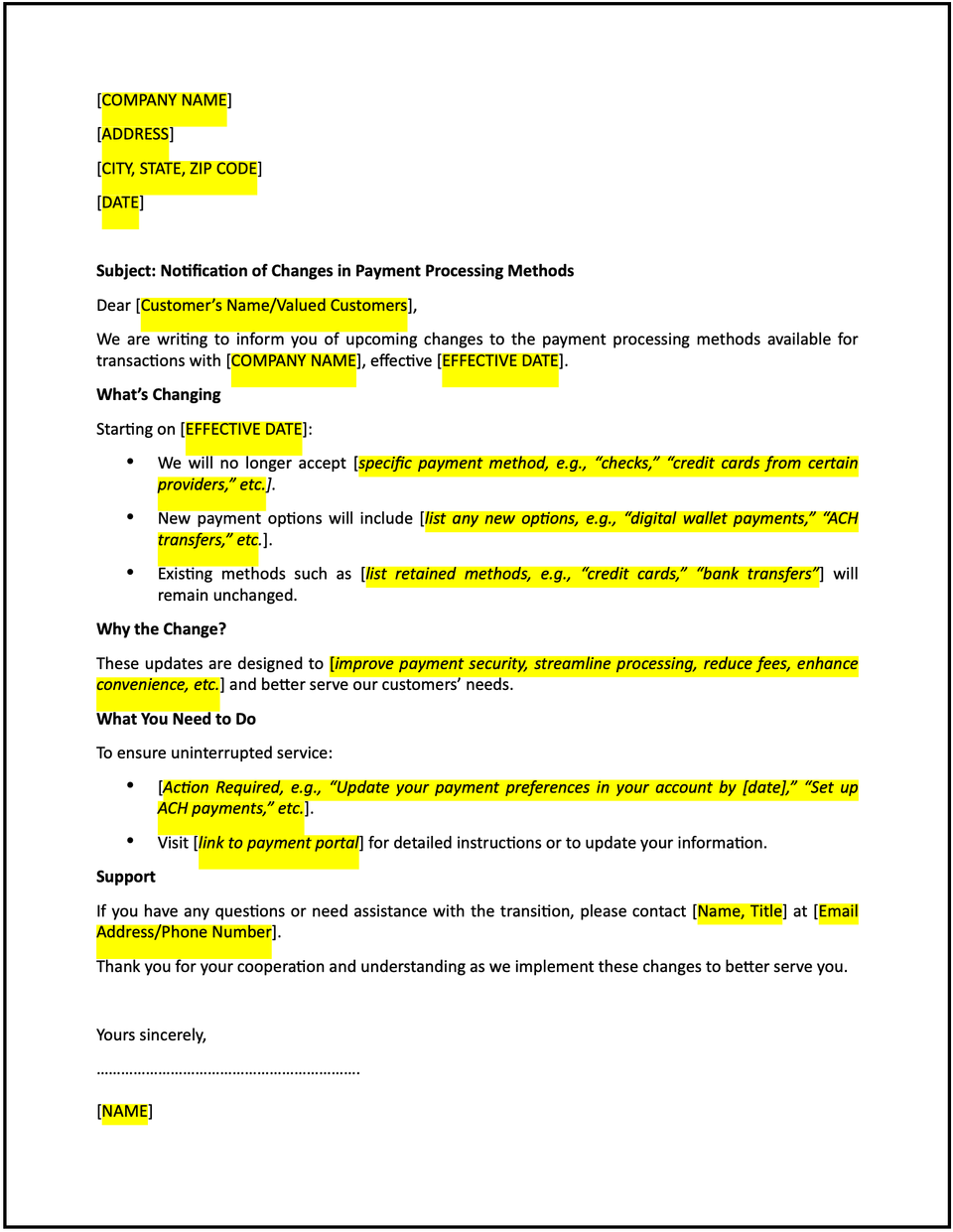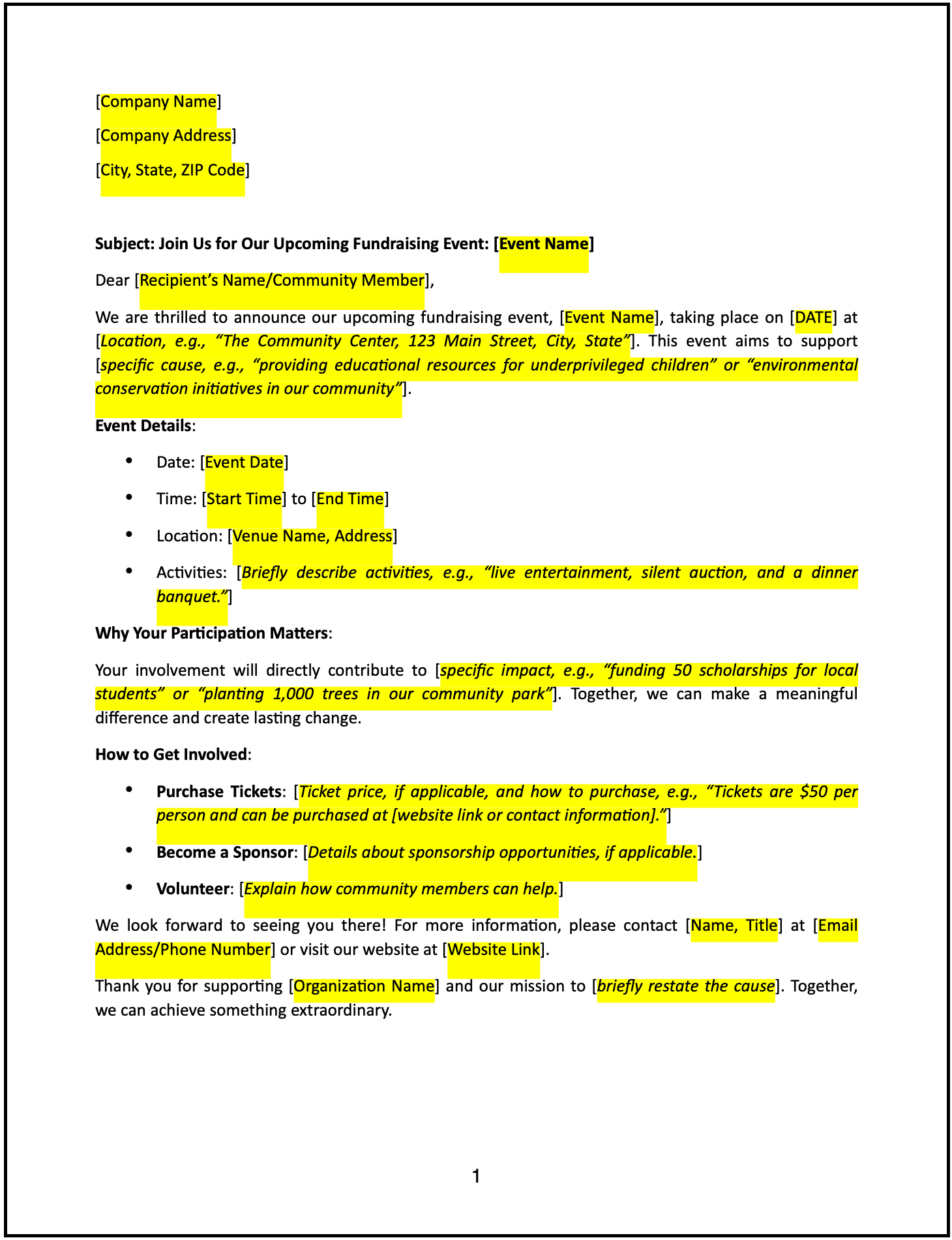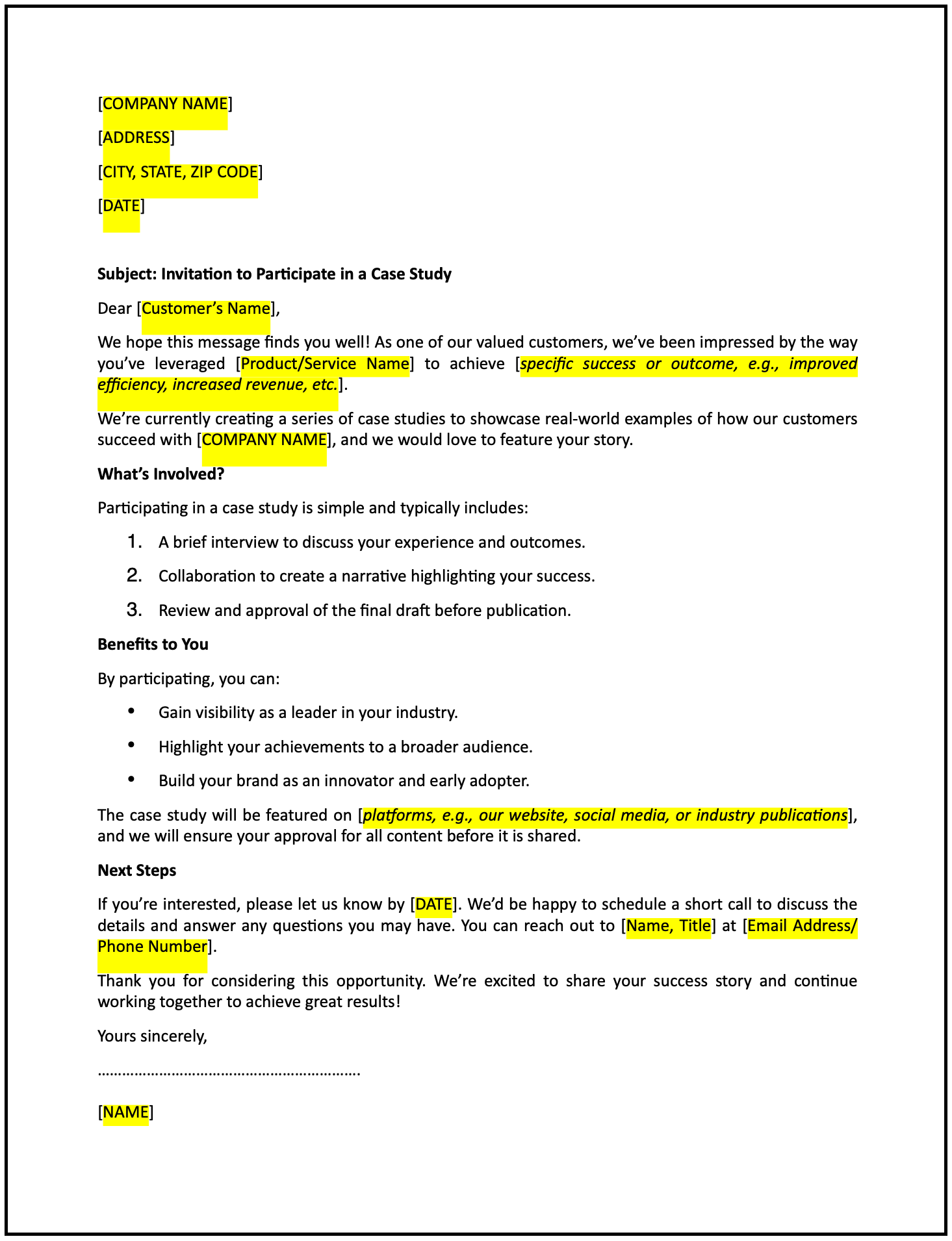Letter of changes in payment processing methods: Free template

Letter of changes in payment processing methods
A notification letter of changes in payment processing methods is a formal way to inform customers or stakeholders about updates to how payments will be handled. This letter ensures transparency, explains the changes, and provides instructions to facilitate a smooth transition.
How to use this letter of changes in payment processing methods
- Open with the purpose: Begin by clearly stating that the letter is to inform recipients about updates to payment processing methods.
- Specify the changes: Clearly describe the changes, such as new payment platforms, additional payment options, or discontinued methods.
- Provide the effective date: State when the changes will take effect to give recipients adequate time to prepare.
- Explain the reason: Briefly outline why the change is being made, such as improving efficiency, enhancing security, or meeting customer needs.
- Highlight the impact: Explain how the changes affect customers or stakeholders and any actions they need to take.
- Offer support: Provide instructions or resources to help recipients navigate the new payment process.
- Maintain a professional tone: Ensure the letter is clear, respectful, and focused on fostering a positive experience.
- Provide contact information: Include details for recipients to reach out with questions or concerns about the changes.
Benefits of using a letter of changes in payment processing methods
This letter template ensures a structured and professional way to communicate updates while fostering clarity and trust. Here’s how it helps:
- Promotes transparency: Clearly outlining the changes ensures recipients are informed and prepared.
- Reflects professionalism: A well-crafted letter demonstrates respect for customers and stakeholders.
- Encourages engagement: Providing instructions and support fosters a positive customer experience.
- Reduces confusion: Clear communication minimizes misunderstandings and facilitates a smooth transition.
- Supports compliance: Ensuring customers are notified aligns with legal and regulatory requirements.
Tips for writing an effective letter of changes in payment processing methods
- Be specific: Clearly describe the changes, including the new or discontinued payment methods.
- Use professional language: Maintain a respectful and supportive tone to reassure recipients.
- Highlight reasoning: Briefly explain the rationale for the change to build trust and transparency.
- Include actionable advice: Provide clear instructions for adapting to the new payment methods.
- Keep it concise: Focus on the key points while ensuring the tone is professional and customer-focused.
Frequently asked questions (FAQs)
Q: What details should I include in this letter?
A: Include the specific changes to payment methods, effective date, reasons for the changes, and instructions for recipients.
Q: Should I personalize the letter?
A: While a general letter is sufficient for large audiences, personalizing for key stakeholders adds a thoughtful touch.
Q: Who typically sends this letter?
A: The finance, billing, or customer relations department usually sends this letter.
Q: How formal should this letter be?
A: The tone should be professional yet approachable, focusing on clarity and reassurance.
Q: When should this letter be sent?
A: Send the letter well in advance of the effective date to give recipients sufficient time to adjust.
Q: Can this letter include visuals?
A: Yes, including step-by-step guides or visuals can help recipients understand the new process more easily.
Q: Is acknowledgment from the recipient required?
A: While not mandatory, encouraging acknowledgment ensures recipients are aware of and prepared for the changes.
This article contains general legal information and does not contain legal advice. Cobrief is not a law firm or a substitute for an attorney or law firm. The law is complex and changes often. For legal advice, please ask a lawyer.


